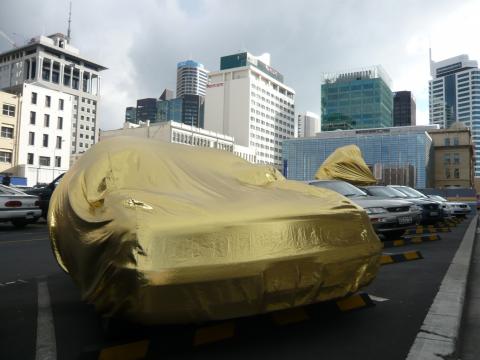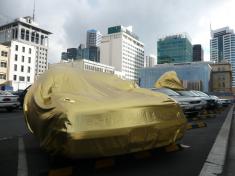Q&A on Public Art Policy
Expanded imaginations
What exactly is a public art policy?
I think at its most simple, and if it is a city council public art policy, it will cover five key areas. It will describe what public art is, and hopefully express this in such a way that gives credit to artists and their creative imagination as the very source of what public art is. Secondly it will outline what public art can contribute to civil society and the public realm and tailor this to a specific vision for the city. Thirdly it will define why council is involved in public art and the scope of council’s roles and responsibilities. Fourthly it will clarify how council will work with others such as artists, communities, mana whenua and public art partners. Finally it will give guidance on how council makes decisions about public art to ensure transparency and openness.
How does it add value to a city?
I believe the best public art programmes achieve two key transformations of the public realm: places and people. Public art makes places more attractive, interesting, thought-provoking, popular and populated. Where artists are asked to respond to the local character of a place and are free to create challenging as well as playful works then the art comes to express and reflect the diversity of the local community in highly imaginative ways. This is good for people and it is often good for business. Secondly public art processes can profoundly engage local communities, which results in people having an active stake in the public places that they live and work in. This is an empowering dynamic which can transform people into public citizens and enable greater cultural connectivity between people.
How do artists and commissioners work within this framework?
There are such a wide array of possibilities here it is difficult to make a simple summary; but in my view there are three fundamental principles that work. There must be a commissioning group who knows why they want public art and who have the resources and commitment to manage the whole process through. There must be a commitment and process to meaningfully engage the directly affected local community. Finally, artists must be selected who are right for the job and who are given as free a hand as possible to come up with highly original concepts, remembering that one of the reasons we commission artists is because we don’t know what we’re going to get – we are expecting our imaginations to be expanded. Good policy will recognise the value of these three principles.
What has been your favourite commission to date?
One at the top of my list was commissioning German artist Ines Tartler to create a community participation project for downtown Auckland within a private development precinct. For the 11-day project the artist created a set of golden dust-covers for cars and invited people who were parking in a public car park to have their car “protected” in the gold cover, for free, for the time that their car was parked there. It was a very successful project on many levels – a surprising and colourful intervention in a dull, grey space; and a fun social interaction during a routine moment in people’s lives while they parked their car and looked for the parking meter. Documented day by day online it also garnered a global web audience.
What exciting new projects are you working on right now?
Right now I am curating a programme of 26 temporary public art projects for the annual NARRACJE festival in Gdansk, Poland. This takes place over three nights in November this year and will involve artists from New Zealand, Australia, Germany, USA, France, Russia, Lithuania and a number selected through an open call in Poland.
Questions by Sonya Korohina for the Bay of Plenty Times. First published Thursday, July 25, 2013, page 5.

